Play
Long Distance Love Affair, Kefalonia
Greek islands are renowned around the globe as holiday destinations but some are better known than others and overwhelmed by coach-loads of tourists, for something less crowded and more authentic Craig Osment takes the ferry to Kefalonia and finds himself beside the seaside at every meal.
April 2, 2019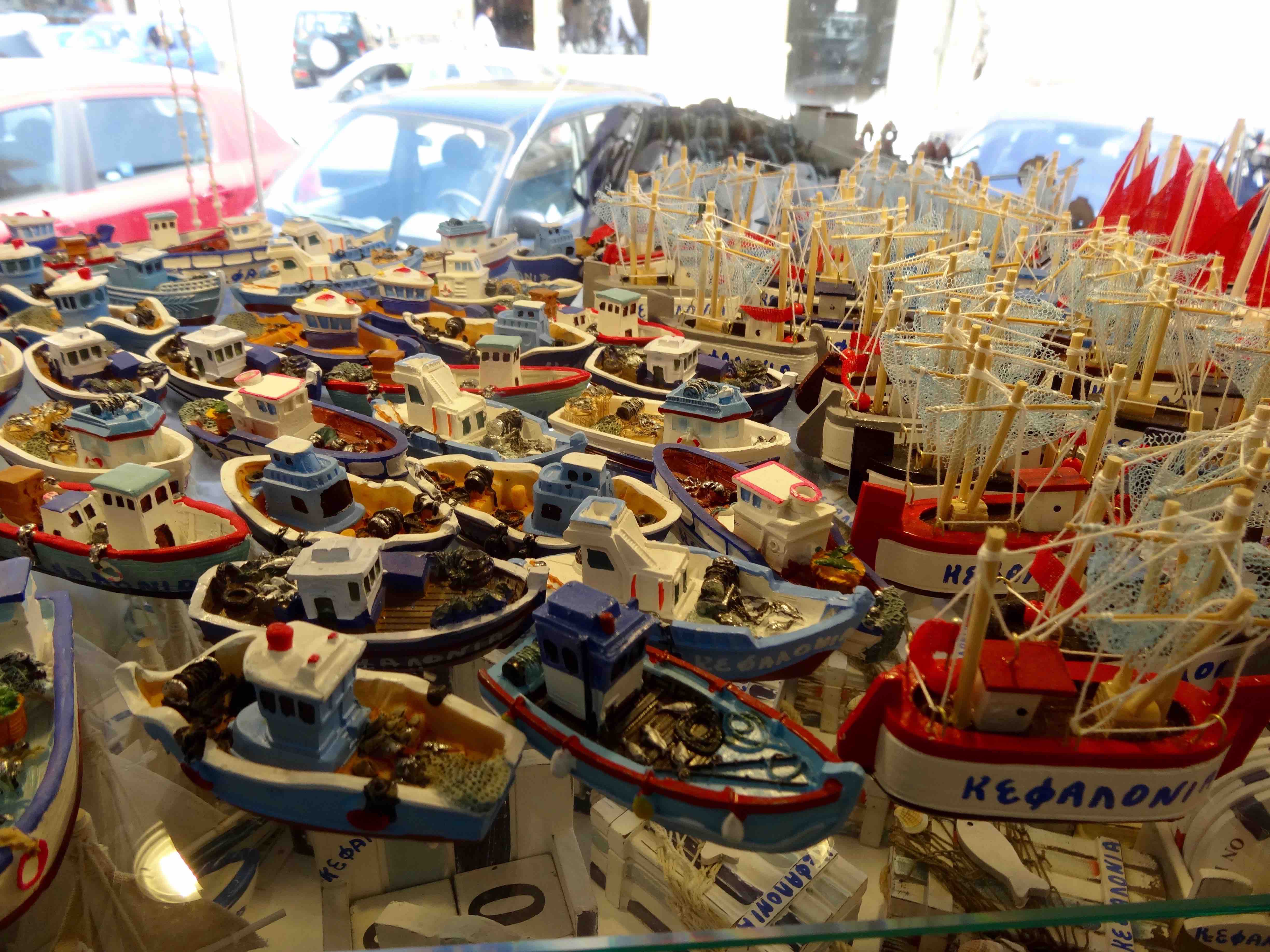
Rebecca Murphy
April 2, 2019Fiskardo (also Fiscardo or in the past Viscardo) has been both reviled and revered for being the St Tropez of Kefalonia as far as I’m concerned the fact that it’s attracted Madonna, Bruce Springsteen, Giorgio Armani and Steven Spielberg among other celebs doesn’t bother me in the slightest, if it’s good enough for their super yachts to moor here then my rented Fiat Punto can park here too. And I fail to see any evidence of the place having been ‘spoiled’ by celebrity, it’s far too small to accommodate more than one or two at any given time with a local population of around 300 and a port frontage of just two kilometres.
It’s easy to see the why people who presumably can visit anywhere in the world their fancy or fortune takes them would want to call in to this gorgeous little fishing village if they happen to be cruising the Greek islands. It typifies what lies at the heart of my love affair with Kefalonia – quay side dining with wonderfully hospitable entertaining Greek company accompanied by simply fabulous food, wine and music.
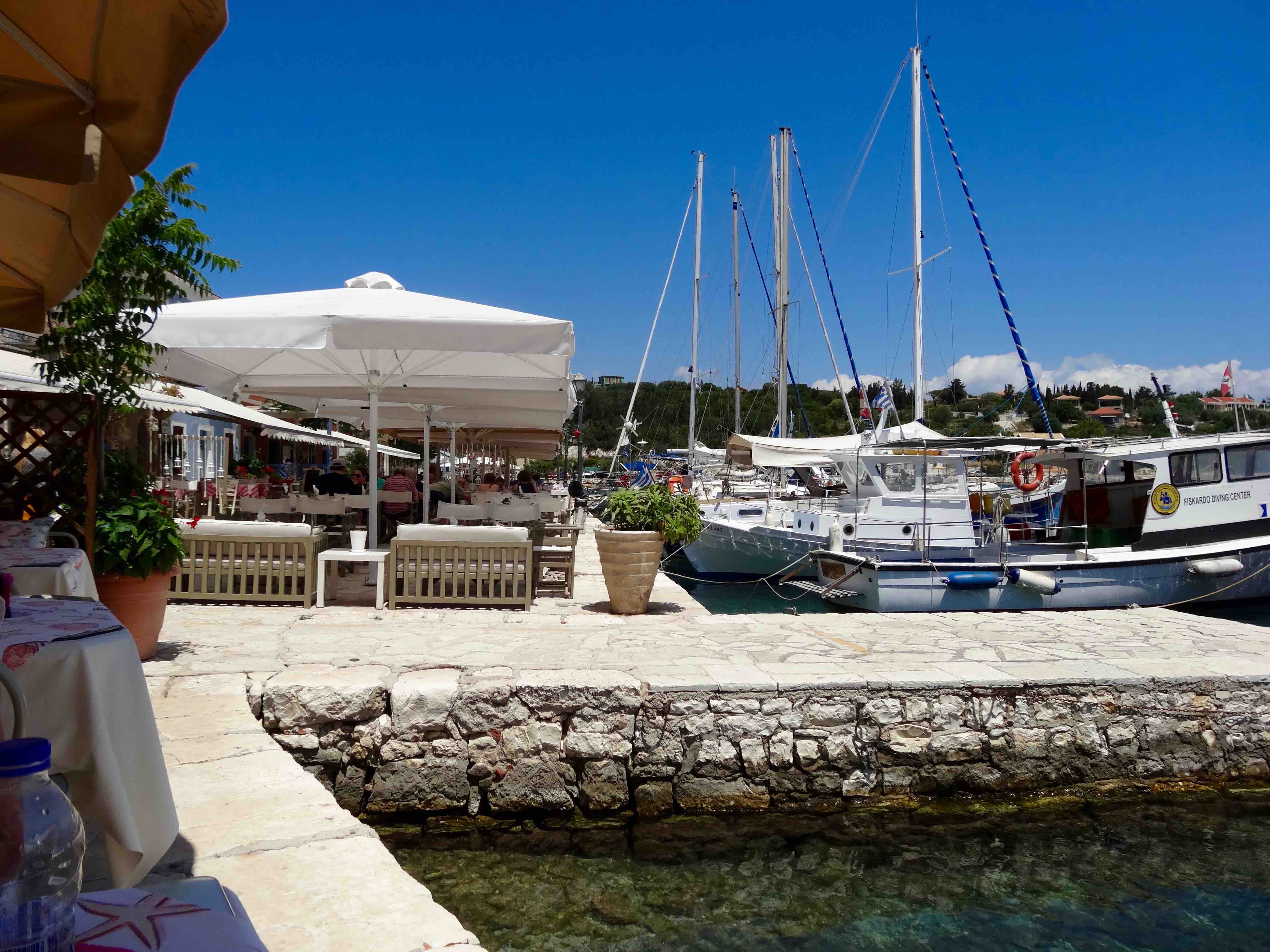
During the month we spent in Greece, apart from a visit to Athens I don’t think we ever ate a meal further than three metres from the water. In Athens the view was mostly of the Acropolis so that made up for the absence of fishing boats and super cruisers. But being that close to the source of what’s on your plate is dining heaven, you get the sense that the octopus or sardines may have leapt from the adjacent water straight onto your plate, the food certainly tastes
that fresh.
Like many things Greek confusion surrounds the name of this island (as well as Fiskardo). I’ve settled on Kefalonia but you may know it as Cephalonia, Kefallonia or even Kefallinia, whatever spelling you settle on won’t make any difference to its attractions, they are many and splendid. It is the largest of the Ionian islands of which there may be six or seven depending on whether or not you include Kythira which is not in the Ionian sea but the group was originally known as Heptanese or ‘the seven islands’ so long as you don’t count the many smaller islands which are also part of the group. Get the idea? It’s all a bit hard to pin down when it comes to Greek ‘facts’ and statistics. Over the centuries there have been numerous invaders and occupiers laying claim to various bits of Greece so Venetians, British, Turks, Macedonians, Romans and French are all responsible for the confusing etymology and the rich history.
In the case of Kefalonia, the Venetians have probably left the most obvious heritage having ruled over the place for nearly 300 years from 1500. Although the French and British followed, the architecture and some of the cuisine is mostly influenced by the Venetian style although much of the original fabric was destroyed by a catastrophic earthquake in 1953 which saw most of the island rebuilt with the notable exception of Fiskardo in the far north.
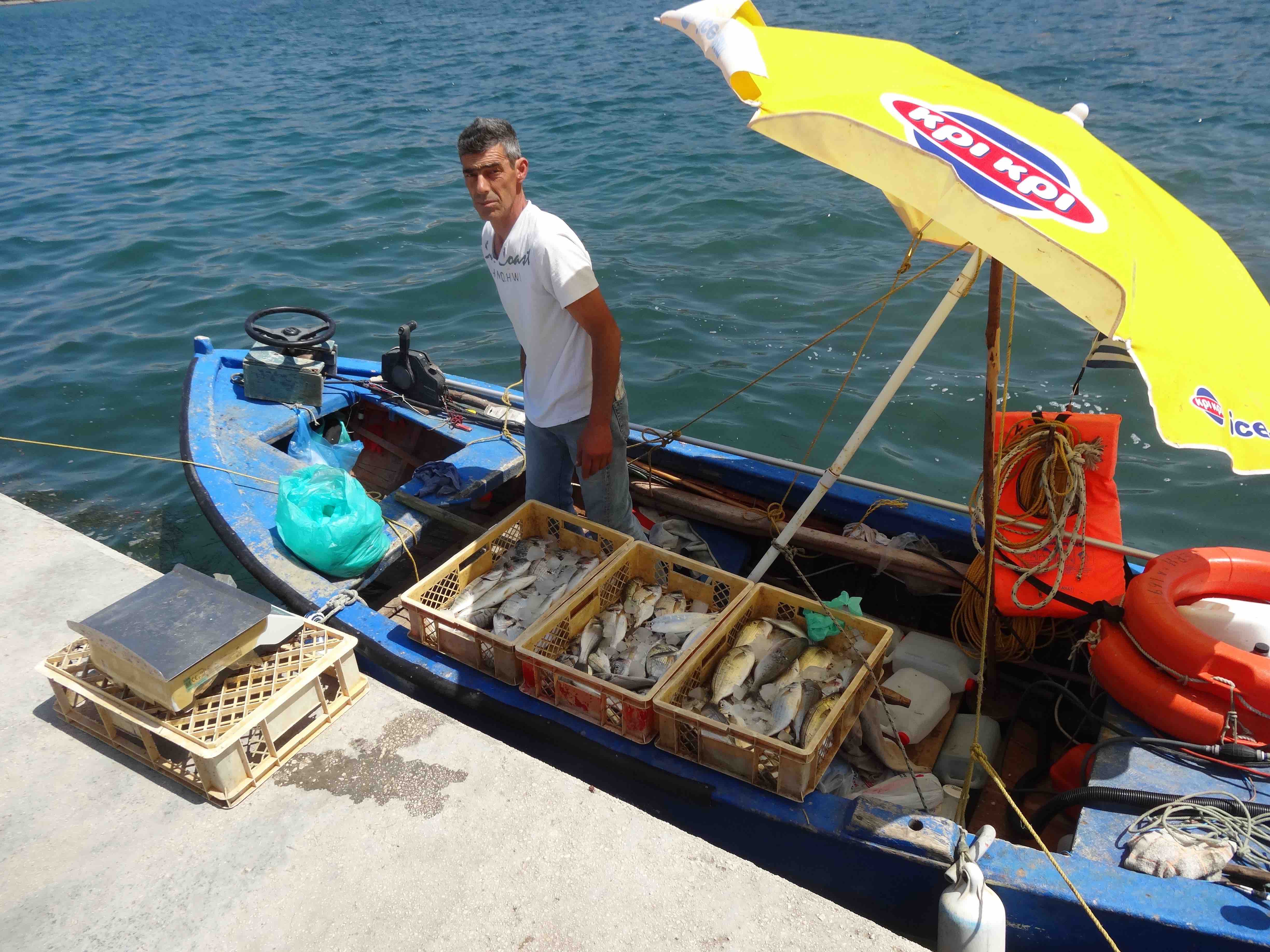
While ‘large’ in comparison to its Ionian neighbours the island is only 770 square kilometres which makes everything easily accessible and from our base in the picturesque village of Sami on the east coast the joke among our little group was that everywhere we drove seemed to be about 30 minutes away although this sometimes in reality stretched to an hour. This made our daily trips to coastal villages a breeze and lunch at a different port or beach a quotidian delight.
The main attractions apart from mostly pebble-strewn beaches and the mountainous interior are culinary and archaeological with Roman ruins and 17th century monasteries on the list as well as the local winery famous for its Robola wines. As you’d expect the island is surrounded by the luminous, vivid blue water that’s common throughout the Greeks isles, and in this area is noted for the appearance of sea turtles and monk seals as well as perfect diving and snorkelling conditions.
In addition it’s home to one of the most fabled beaches in the world; Myrtos, on the north west coast, which stretches in an arc between two 900-metre mountains and is dazzling white because of the marble and limestone pebbles that become increasingly smaller as you approach the waterline. Amazingly during the northern spring on our visits, there was hardly a soul to be seen after winding down the steep road from above, just a carpark and a deserted beach bar, very little activity for such an iconic beach but then the entire island is an overlooked wonderland compared to some of Greece’s more popular tourist destinations which makes it even more alluring, and the almost total lack of tourist coaches a welcome change from some.
Movie star
There is a sandy beach and tourists to be found on the southern tip of the island at Skala, which is strangely the least appealing destination apart from a Roman villa ruin which features well preserved mosaic floors from the 3rd century AD. The beach itself and the surrounds appear to have been transported from the Costa del Sol with large hotels and beach chairs which are completely at odds with the intimacy of most of the other coastal towns.
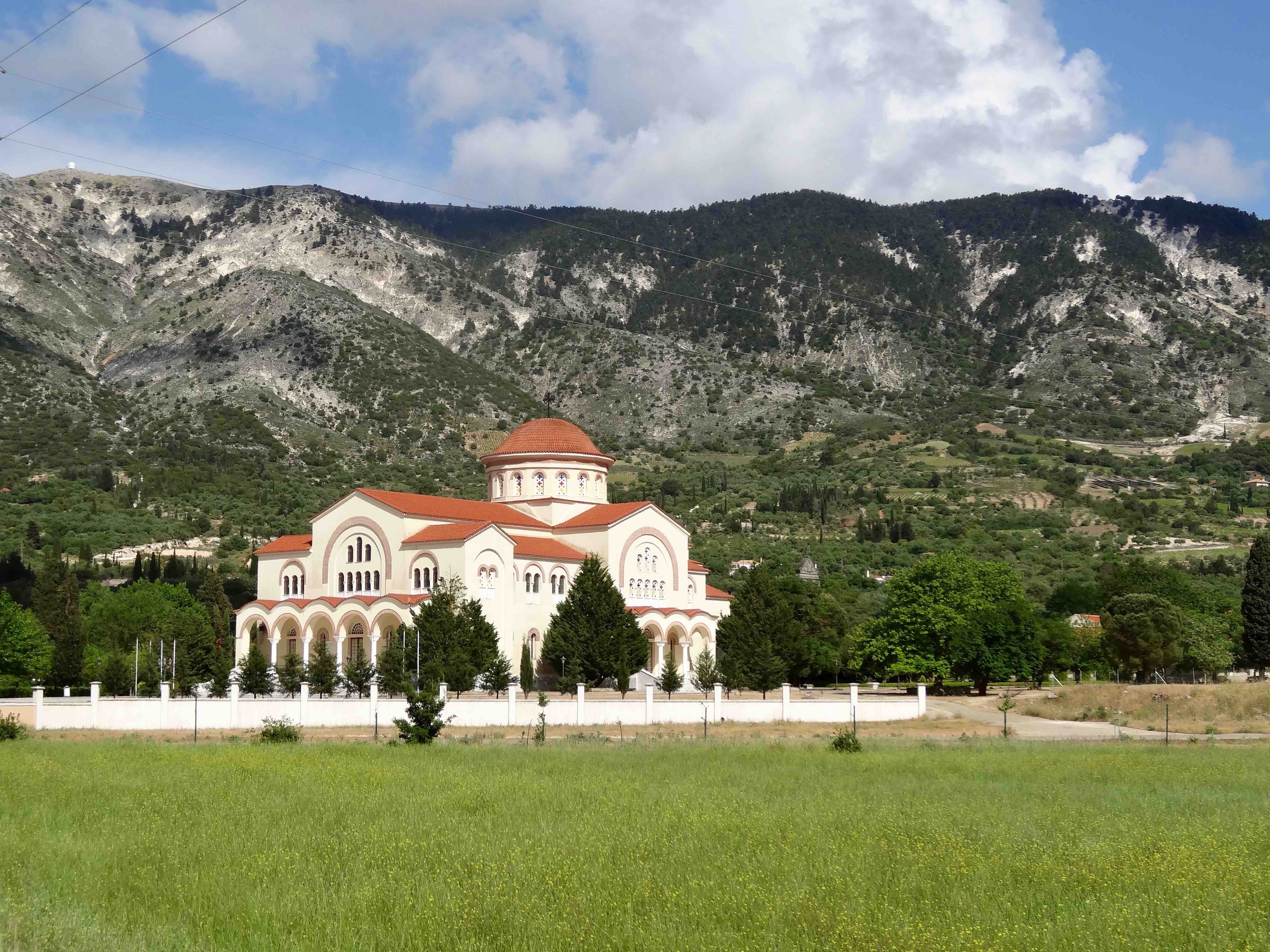
There is plenty for history buffs though with a museum in the island’s capital of Argostoli featuring some of the country’s most significant finds from the Mycenaean era along with the 16th century monastery of Saint Gerasimus, patron saint of Kefalonia which features an elaborate carved iconostasis or alter screen and a silver casket containing the remains of the saint himself. Among the more recent points of historical interest is the fame brought briefly to the island as the location for the 2001 film Captain Correlli’s Mandolin which was filmed entirely on the island and mostly around Sami and Ayía Ephimía where the local taverna owners still reminisce about the presence of Nicholas Cage and Penelope Cruz.
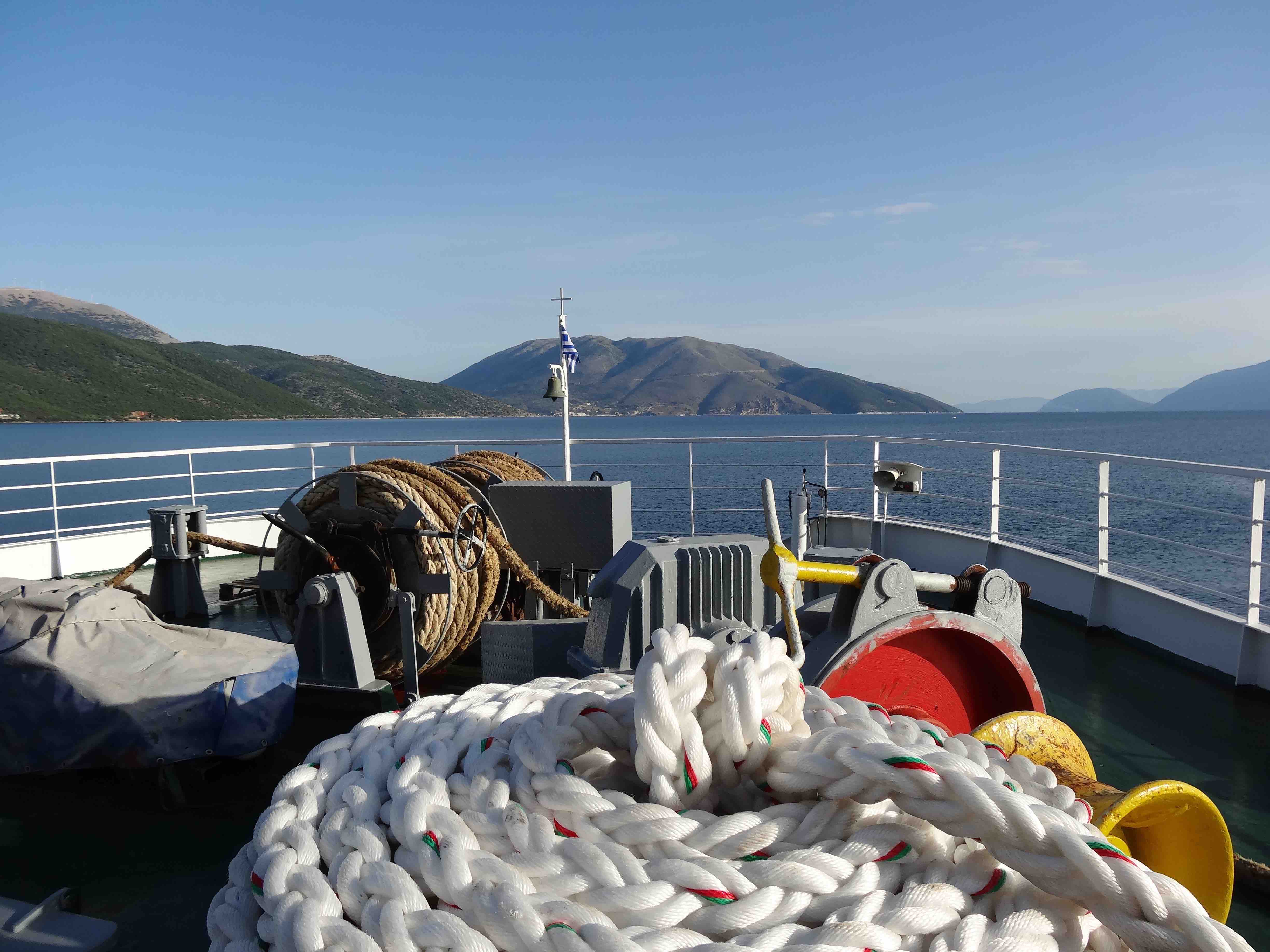
But back to those charming little waterfront villages with a quay and fishing boats and open tavernas lining the seaside, they are dotted around the entire coastline and some are must-visits. Poros, where we landed after one of those wonderful trips on a blue and white inter-island ferry from Kyllini in the Peloponnese area of the mainland and revisited during our stay to enjoy yet another waterside lunch. Further up the west coast is Ayía Ephimía, which is a favourite with visiting sailors who moor their yachts right outside their favourite taverna. On the north east coast, Assos has to enjoy one of the most spectacular locations of all, nestled in a small bay behind an isthmus and home to the 16th century Assos Castle sitting atop a rocky hill, the village is a delight with the inevitable beachfront eateries plus a couple of ruined Venetian houses decaying behind to remind you of the history and the 1953 earthquake which is recalled here with a plaque thanking the French for their assistance with reconstruction after the devastation.
Finally a visit to Argostoli gives you a glimpse of the ‘big smoke’ if a town with just over 10,000 inhabitants qualifies. The capital is once again set by the water and painted in gelato colours and the stepping off point for a ferry trip to the other main town of Lixouri which is just across the Argostoliou Gulf and formerly the summer holiday destination of choice for the children of the Greek Royal Family and claims to have been visited by Richard Strauss during its heyday in the 19th century.
The island next door
Kefalonia’s nearest neighbor is Ithaca (or Ithaki) which is just a half-hour car ferry trip from Sami and reputedly home to the mythical hero Odysseus from Homer’s Odyssey although this is still subject to dispute. Whatever, the island has been occupied since the 2nd millennium BC and has plenty of history as well as a beautiful capital in the form of Vathy which is – you guessed it, yet another stunning waterside town and another opportunity for lunch in the sunshine which seemed to follow us throughout our stay.
What to do
Greece attracts nearly 30 million tourists per year so it’s not just food that brings them, the country includes a record 18 UNESCO World Heritage Sites, hundreds of islands lapped by waters in every hue of blue, and a wonderful history steeped in myth and meaning culled from its many occupiers.
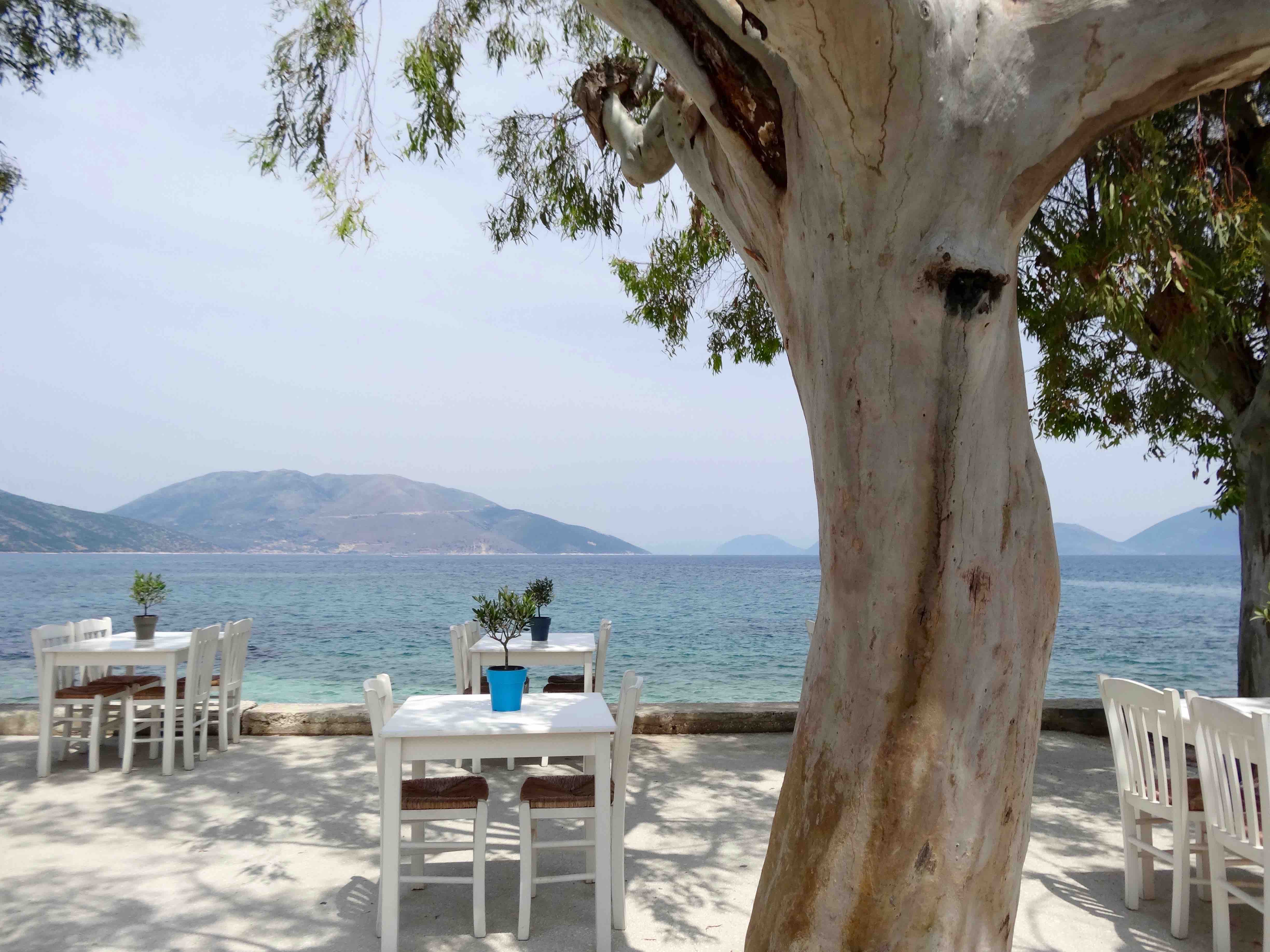
Having said that you’ve probably gathered that eating and drinking are top of my list. The waterside tavernas are wonderfully convivial places which are often separated from their kitchens by a stretch of road between the covered seafront dining area and the main building. This means waiters deliver food trays from among the passing traffic which, while an occupational health and safety risk, seems to work perfectly well most of the time. Greece being the ‘cradle of civilisation’ is still out in front on a lot of social activities which would be banned elsewhere in the world. These tavernas often offer live music from resident rembetika groups and lots of spontaneous dancing to amuse their diners as if there wasn’t already enough to ponder from the table – the boats moored a few metres away and the passing couples and families undertaking their daily ‘volta’ which is the Greek version of the Italian passeggiata.
Food to try
Start the day with yoghurt and honey, don’t miss the goat and lamb dishes and definitely eat as much seafood as you can – octopus, swordfish, sardines – whatever is fresh and on the menu. Try Greek favourites like saganaki (fried cheese), souvlaki, moussaka and obviously followed up with some baklava. Olive oil and oregano accompany almost everything savoury. And at the end of the meal try the raki, arak or ouzo if you’re within walking distance of home.
© 2024 Pacific Island Living Magazine all Rights Reserved
Website by Power Marketing